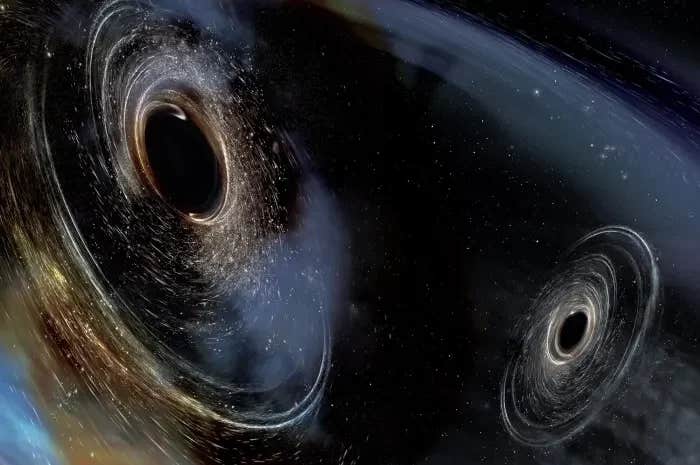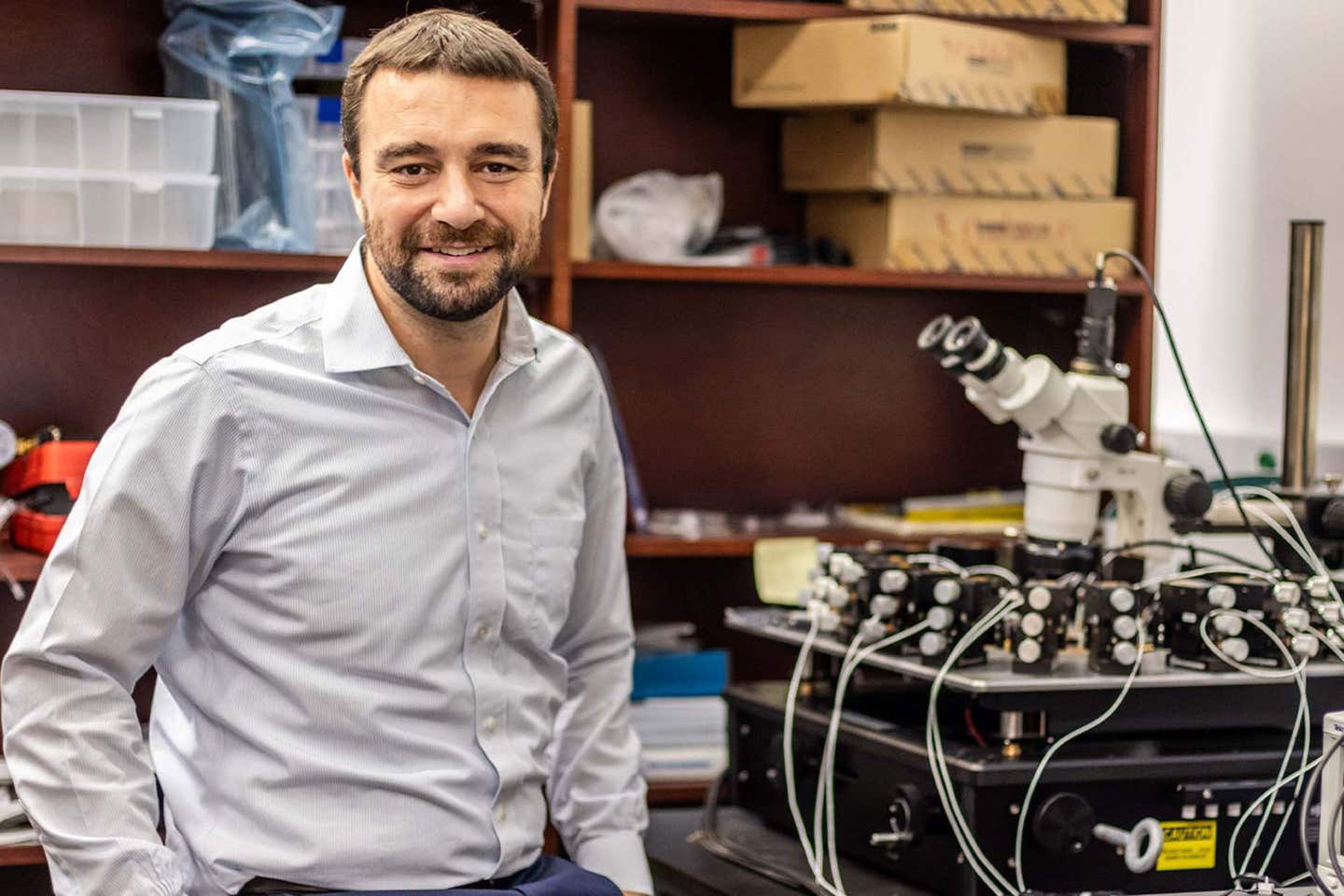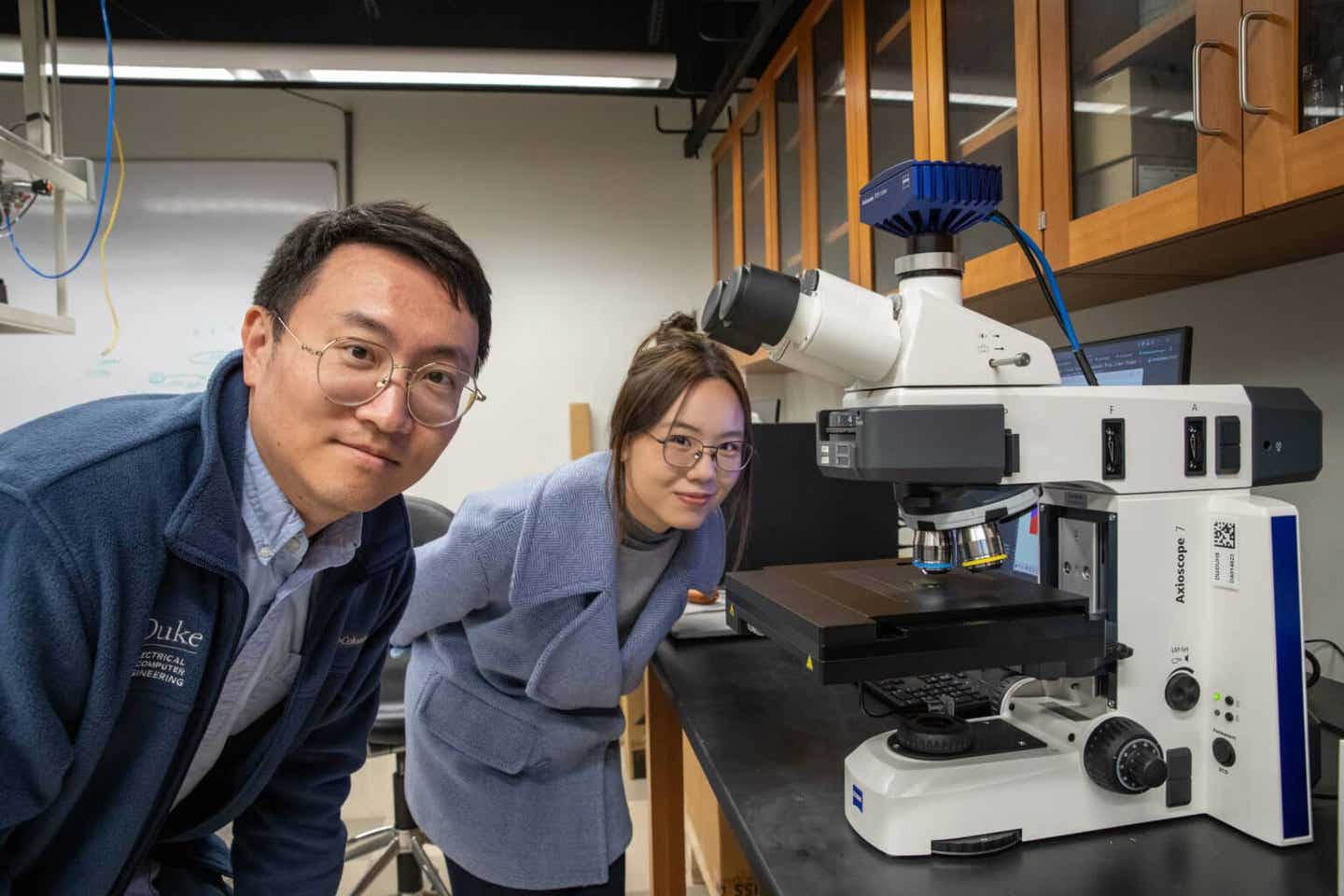Evidence of primordial black holes could be hiding inside Earth rocks
Primordial black holes may be some of the strangest relics left over from the dawn of the universe having formed only fractions of a second after the Big Bang.

Primordial black holes may leave hidden scars in asteroids and even Earth’s rocks. (CREDIT: CC BY-SA 4.0)
Primordial black holes may be some of the strangest relics left over from the dawn of the universe. These objects are thought to have formed only fractions of a second after the Big Bang, when matter was so dense that small regions collapsed under their own gravity. Unlike black holes born from collapsing stars, primordial ones—often called PBHs—could be as small as an atom yet contain the mass of a mountain.
For decades, physicists have wondered whether these early-universe fossils could explain some of the universe’s greatest mysteries. PBHs are candidates for dark matter, the invisible substance believed to make up most of the cosmos. They might also account for unusual gravitational waves and help solve longstanding puzzles in cosmology, like why magnetic monopoles or cosmic domain walls are not commonly observed. Despite this promise, no PBH has ever been directly spotted.
A recent study, however, suggests scientists may not need to catch one floating through space. Instead, they could look for the scars PBHs might have left behind in planets, asteroids, and even in slabs of metal here on Earth.
A New Way to Spot the Invisible
The work, published in Physics of the Dark Universe by Dejan Stojkovic, PhD, of the University at Buffalo, and De-Chang Dai, PhD, of National Dong Hwa University, lays out a surprising possibility. PBHs may already be hiding inside or have passed through familiar cosmic objects. If so, their quiet destruction could leave clear and measurable traces.
If a PBH becomes trapped inside a planet or asteroid with a liquid center, it might slowly eat away at the dense core while leaving the outer shell intact. Over time, the object would hollow out into something like a giant eggshell. If the outer layer were strong enough to resist collapse, the hollow world could remain stable for billions of years.
Stojkovic notes that unusual densities could give these objects away. “We can detect these hollow objects by studying their orbits,” he explains. “If an object’s density is too low for its size, that’s a strong indication it’s hollow.”
Related Stories
- A cosmic flash that could explain the birth of supermassive black holes
- Scientists discover rare intermediate black holes using gravitational waves
But not every world has a liquid heart. In solid asteroids, a PBH might instead punch a narrow tunnel straight through. Unlike craters left by collisions, these tunnels would be perfectly straight and extremely thin—no more than a micron wide. Such a mark could last for millions, even billions, of years.
Hollow Asteroids in the Solar System
A hollow planet sounds unstable, so the researchers examined whether natural materials could withstand the crushing pull of gravity without a core. By applying general relativity, they compared the strength of different minerals—granite, quartz, iron, and ice—to see if a hollow shell could resist collapse.
It turns out that many common planetary materials are strong enough, especially if the PBH is very small. The team also looked at exotic substances like diamond and carbon nanotubes, which are even stronger. While futuristic civilizations might dream of building vast shells around black holes to harvest their energy, even the toughest materials humans know would fail near a star-sized black hole. Still, the study shows that for smaller PBHs and smaller bodies, hollow shells could naturally form and survive.
Could some of the asteroids already mapped in our solar system be hollowed out by PBHs? The researchers point to candidates like Lutetia, a 100-kilometer-wide asteroid with a density of about 3.4 grams per cubic centimeter, and Vesta, which is over 500 kilometers across. Both once likely had molten interiors. If a PBH lodged in their cores, they could have been quietly hollowed from the inside out.
Even smaller objects, such as Bennu and Ryugu, already appear unusually light for their size. Current models suggest they are “rubble piles,” loose clusters of rock, but PBH interactions cannot yet be ruled out. Because spacecraft have already visited Bennu and Ryugu, scientists have the tools to test these ideas by measuring mass, density, and internal structure with high precision.
Tunnels on Earth
PBHs may also leave signs much closer to home. If a PBH passed through Earth, it would move so quickly and release so little energy that no one would notice. Even human tissue would remain intact. Stojkovic compares it to a bullet versus a rock hitting a window. A rock shatters the glass because the impact allows the structure to react. A bullet is too fast, leaving behind only a clean hole.
On Earth, slabs of metal or ancient geological samples could act as PBH detectors. A micrometer-wide tunnel suddenly appearing in polished metal would be difficult to explain by ordinary causes. Unlike meteorite dents, which strike the surface, PBH tunnels would cut all the way through in a straight line.
Though the chance of catching one is tiny—just a handful of events per year if PBHs make up all dark matter—the search is inexpensive. Old rocks, glass, or other natural materials could quietly preserve these marks for eons. By carefully examining them, scientists might uncover evidence of the universe’s earliest black holes.
How Long Does It Take?
Another question is how quickly a PBH could hollow out a planet or asteroid. The process depends on the black hole’s size and the density of the object it consumes. In stars, the timescale could stretch to millions of years. But in smaller worlds with liquid cores, the process could be far faster.
A PBH of very low mass could eat through a one-kilometer liquid core in just years—or even months. That means hollow worlds could form on timescales short enough that they might already exist in our solar system today.
The researchers also explored how advanced civilizations might one day use PBHs. In theory, surrounding a PBH with a large shell could allow the capture of energy from Hawking radiation or from swirling matter in an accretion disk. But engineering such a structure near a black hole is beyond even the most ambitious human technology. Materials would need to withstand unimaginable forces, and no known substance could survive near a solar-mass black hole.
Still, this line of thinking shows how the same physical principles used to predict hollow asteroids could also inspire futuristic engineering. What begins as an idea to find traces of PBHs may one day shape concepts for harvesting cosmic energy.
Why It Matters
Detecting PBHs would be a breakthrough in physics and astronomy. These objects could confirm theories about dark matter, reshape our understanding of the early universe, and open up new paths in cosmology. Stojkovic stresses the importance of bold ideas in this search. “The smartest people on the planet have been working on these problems for 80 years and haven’t solved them,” he says. “We probably need a completely new framework altogether.”
While the odds of success are slim, the stakes could not be higher. Finding the first trace of a primordial black hole would not just solve a cosmic puzzle. It would transform how we think about the universe itself.
If hollow asteroids or microscopic tunnels are detected, they could serve as the first evidence of primordial black holes. This would confirm a new type of black hole and strengthen the case that dark matter is made of them. Future missions could focus on measuring densities and structures of asteroids already visited by spacecraft.
On Earth, scientists could begin inspecting ancient rocks and metals for microscopic tunnels at little cost. In the long term, the physics developed here may even guide technologies for harvesting black hole energy, a possibility for civilizations far more advanced than ours.
Note: Materials provided above by The Brighter Side of News. Content may be edited for style and length.
Like these kind of feel good stories? Get The Brighter Side of News' newsletter.



